

Beaumaris Gaol
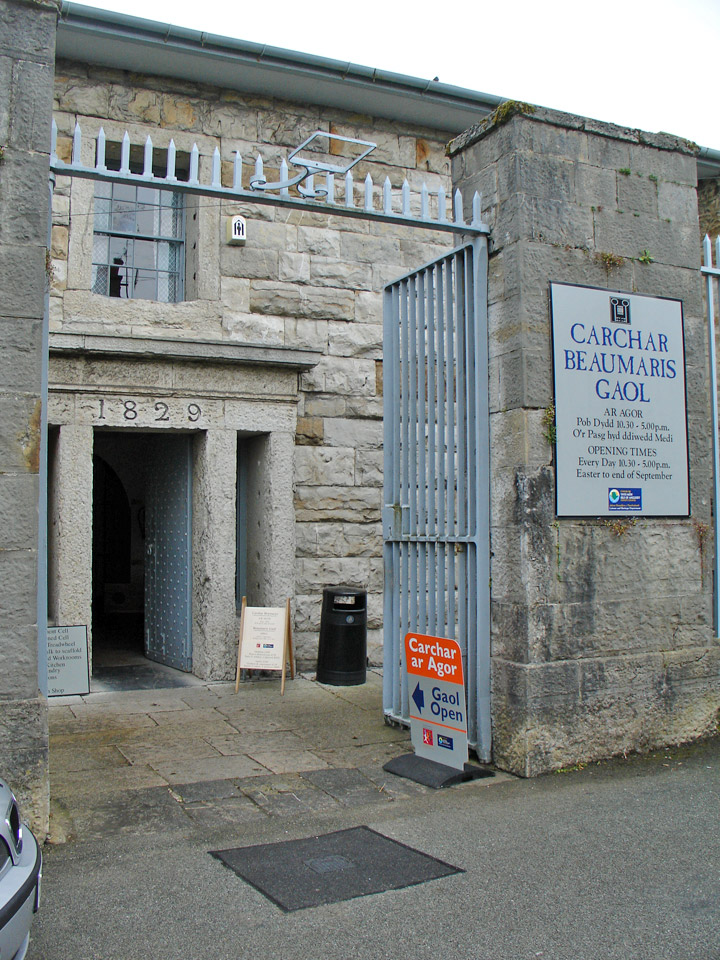
Beaumaris Gaol
This is a unique opportunity to visit a nineteenth century gaol. The visit will enable you to appreciate the English judicial system of the nineteenth century as it was applied within Wales. The tour will allow you access to cells, treadmills, punishment blocks. infirmaries and the like.
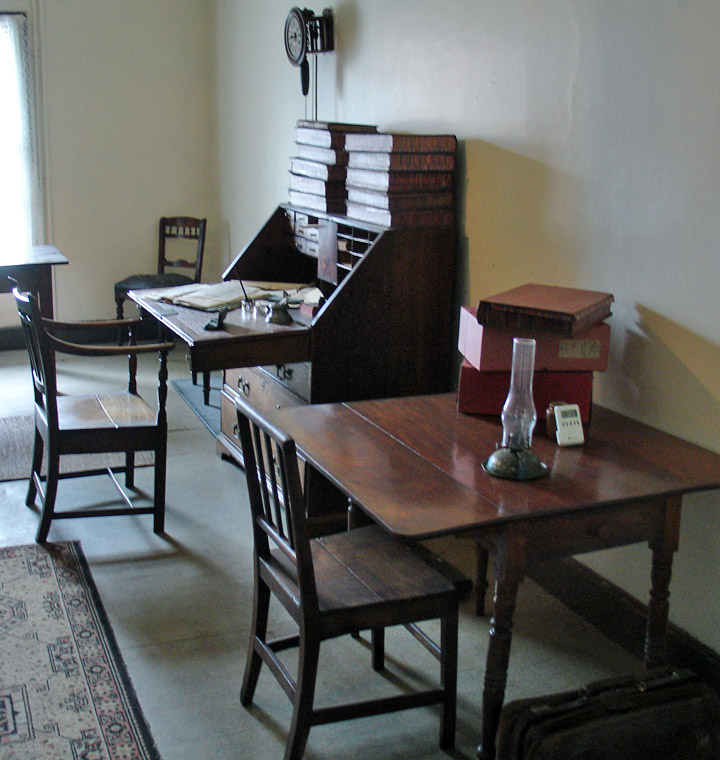
Governor's Office

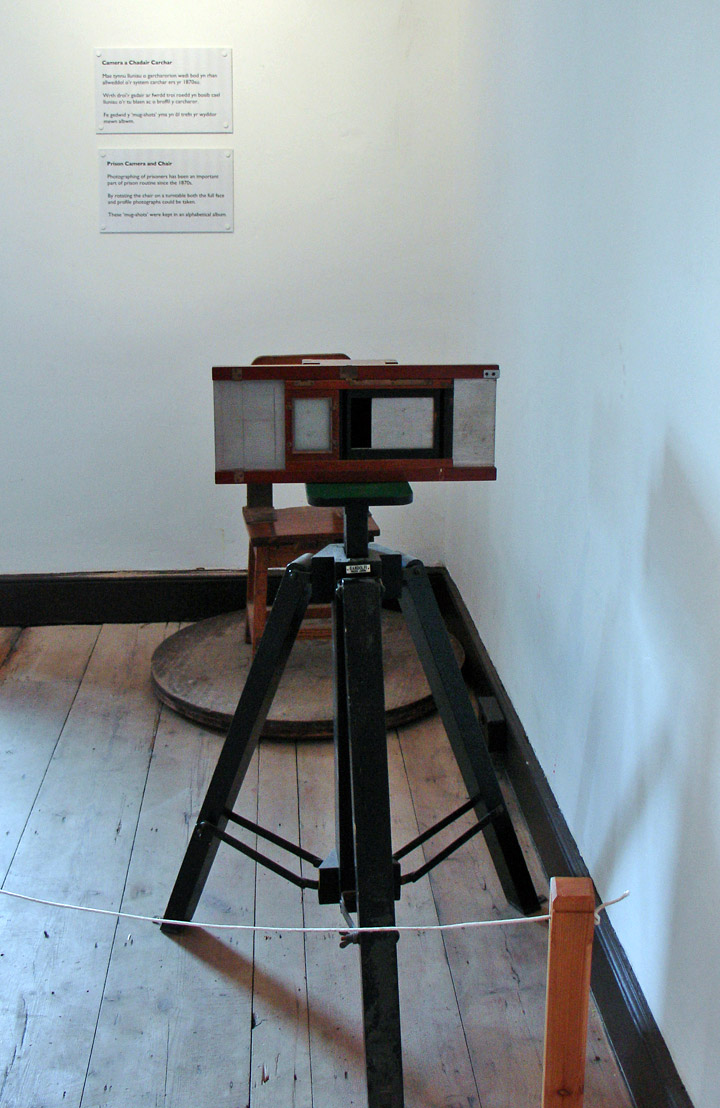
Prisoners were photographed

the chapel
Originally only a single cell, the infirmary was enlarged and a toilet provided
just outside the door for the use of sick prisoners, a surgeon was appointed to
look after sick prisoners, he could order special food or alcohol for his
patients
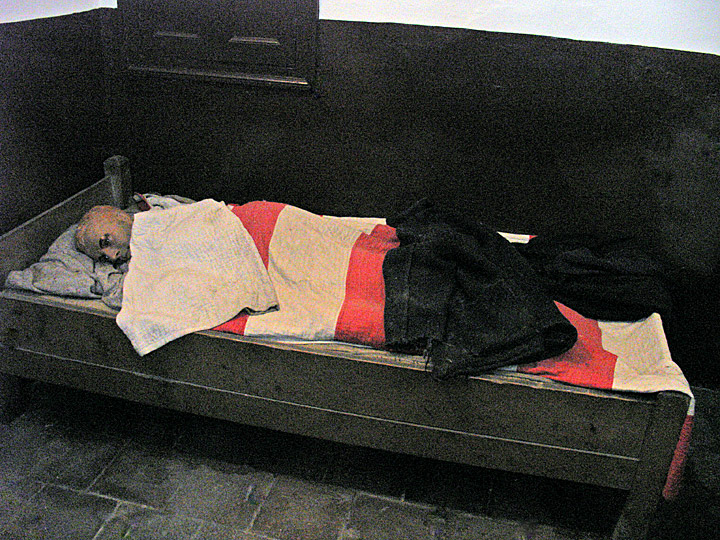
Typical cell - Early Period
These cells measure about 10 feet by 6feet, prisoners were provided either with hammocks or beds, a seat, table, an enamel washbowl and toilet which was flushed by water from the wash basin. Until extensive improvements were made to the goal in 1867 the cells were not heated and in winter temperature dropped to well below 50 degrees F. Each cell was fitted with an alarm system. A prisoner who wished to call attention of a warder turned the knob on the right hand side of the door. This simultaneously rang a bell in the corridor, and operated a metal flap by the door outside which indicated to the warder which prisoner had rung for him. The remains of a gas lamp fitting can he seen - gas was brought into the Gaol in 1857.
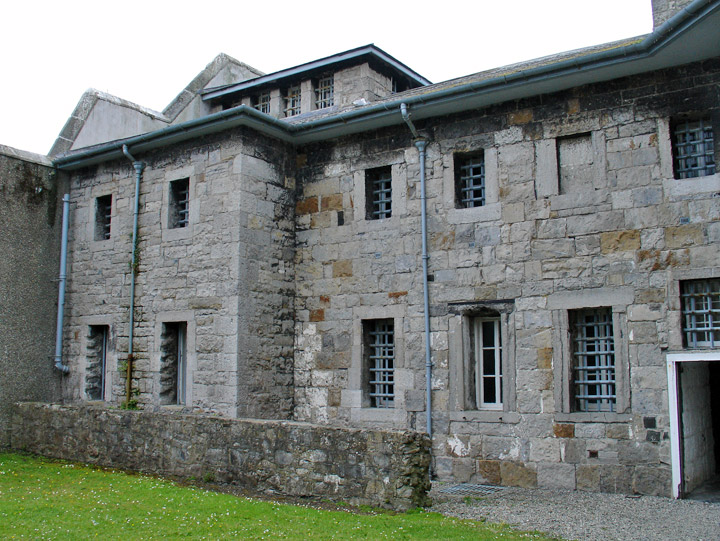
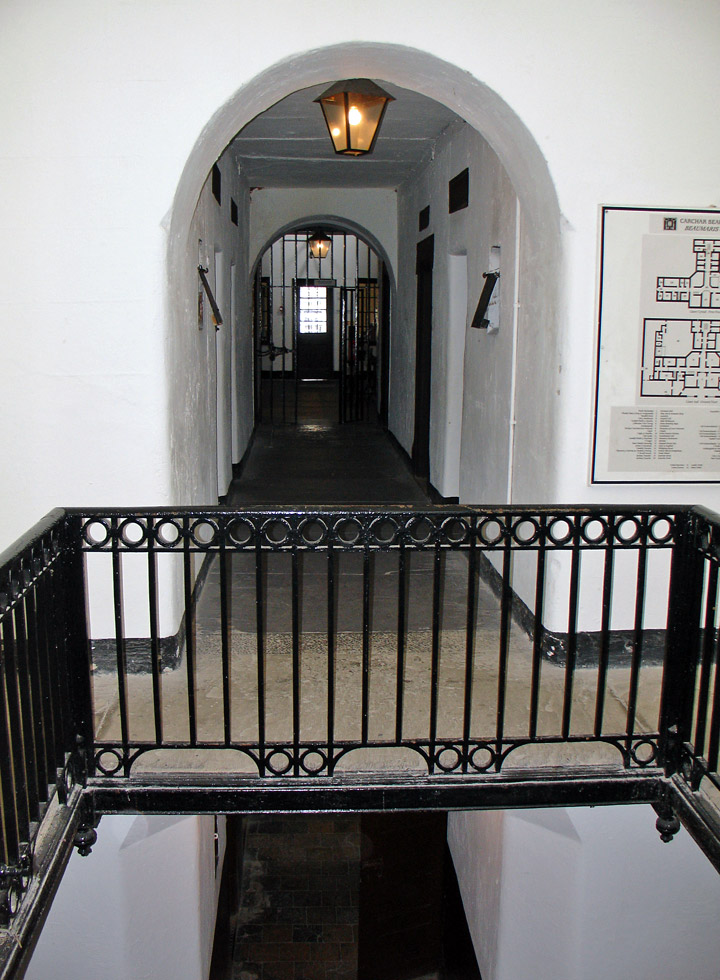
New wing
This is easily distinguishable from the original building. being much lighter and the cell larger. The new part of the goal was built in 1867 following an act of 1865 which stipulated a minimum number of cells for separate confinement, prison inspectors disliked prisoners working together during the day. preferring separate confinement at all times. Also in 1867 a heating system was provided for all the goal. so making it possible for the cell in the old building to be occupied by day as by night.
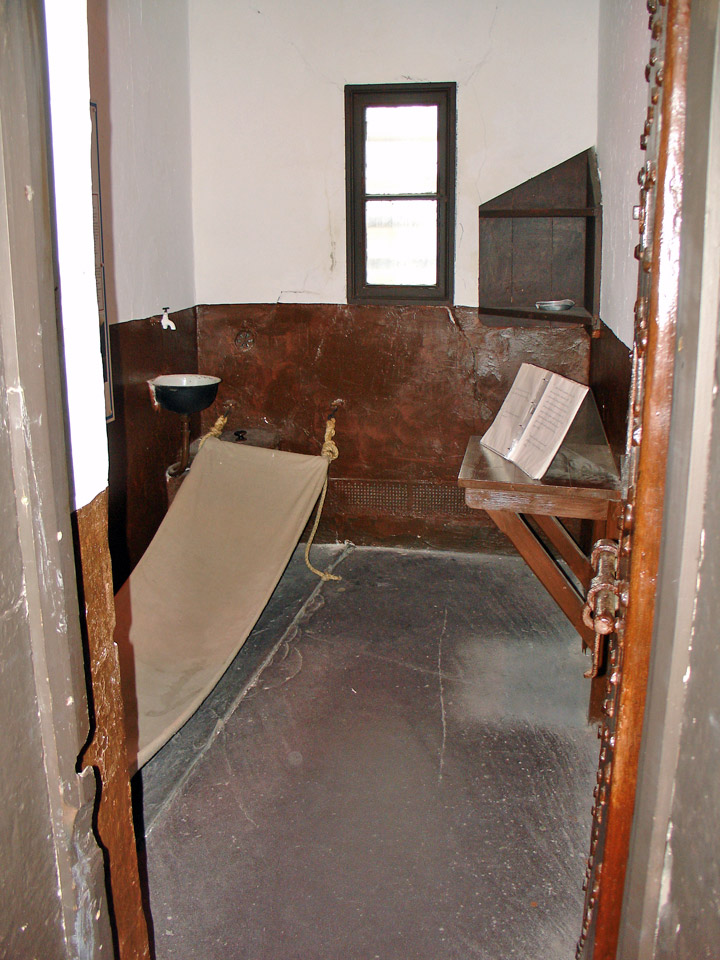
Typical Cell - The separate system
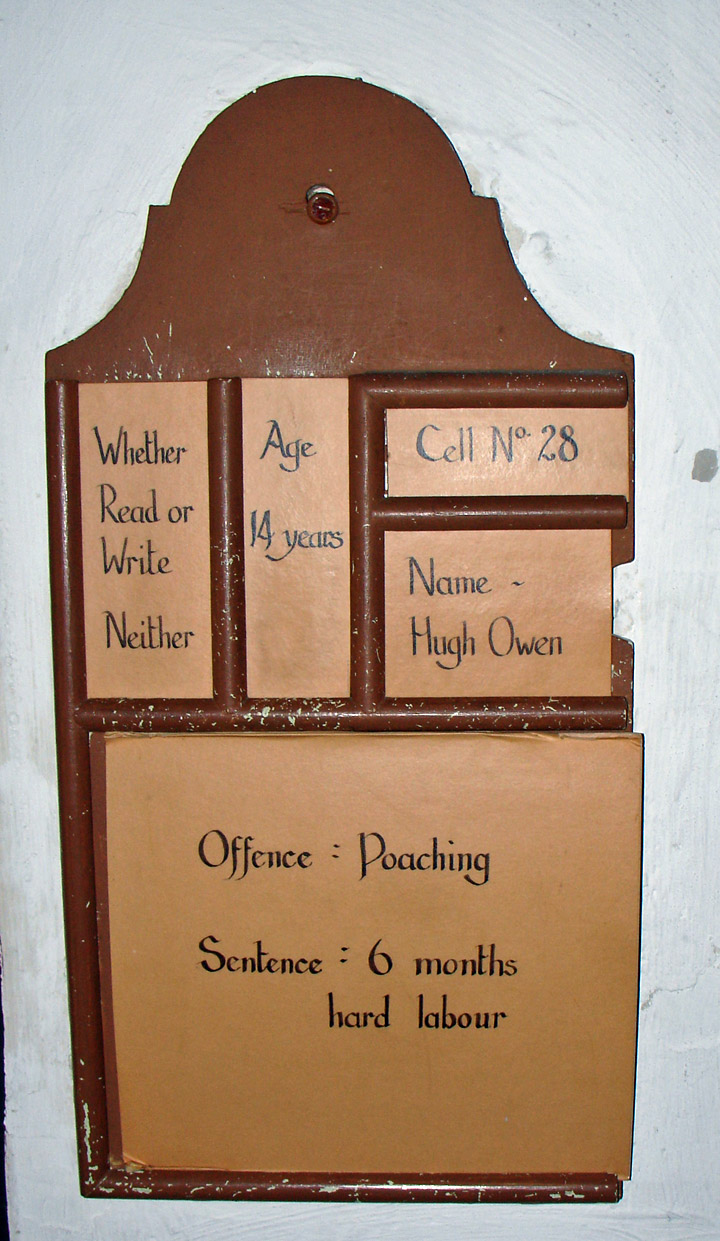
Under the separate system prisoners worked. ate and slept in their cell to avoid
the corrupting influence of association with the other inmates. A common form of
labor was turning the crank.
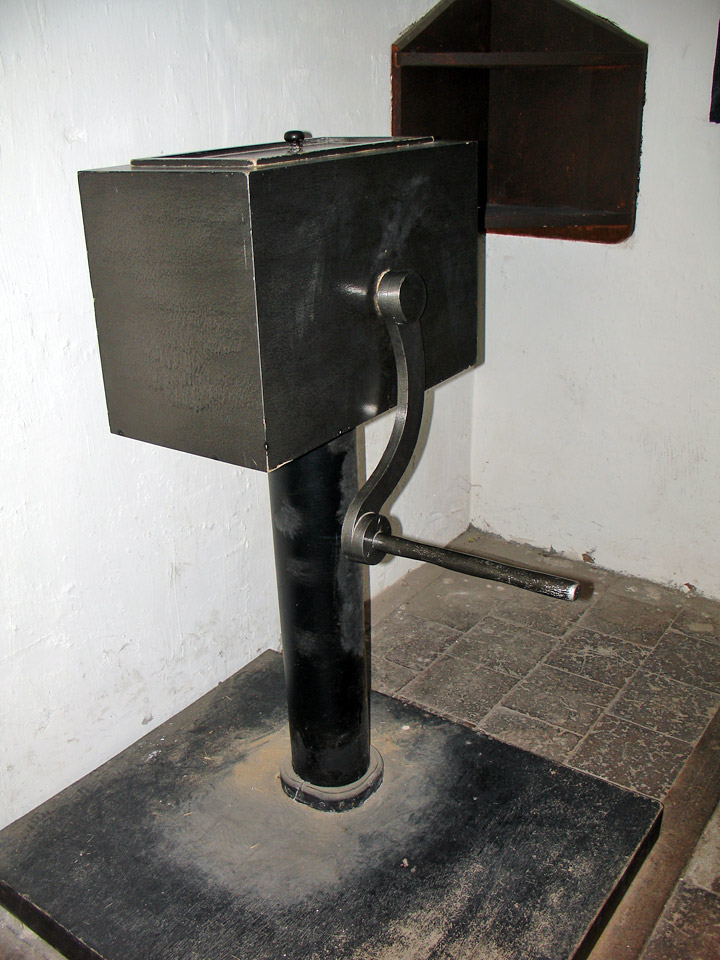
The Crank
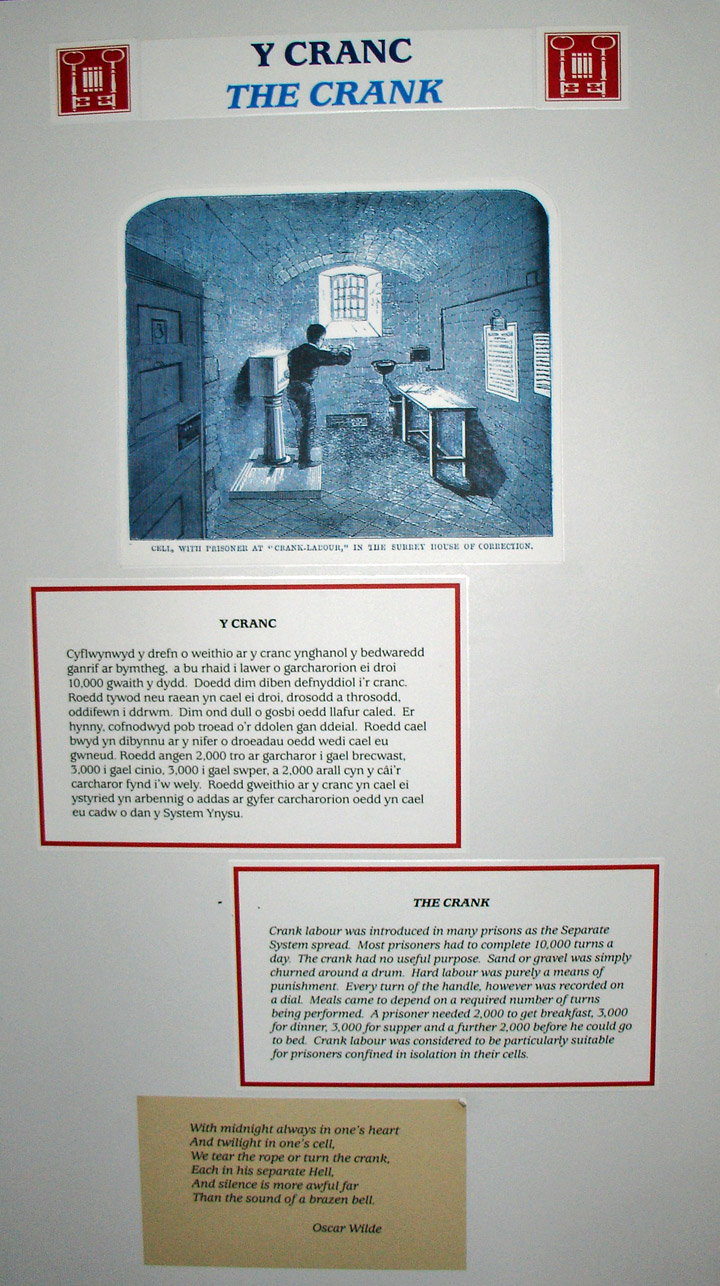
This involved the prisoner working alone in the
cell, turning the handle of a crank 10.000 times a day. The work had no purpose
other than keeping the prisoner occupied. but meals depended on the work being
completed.
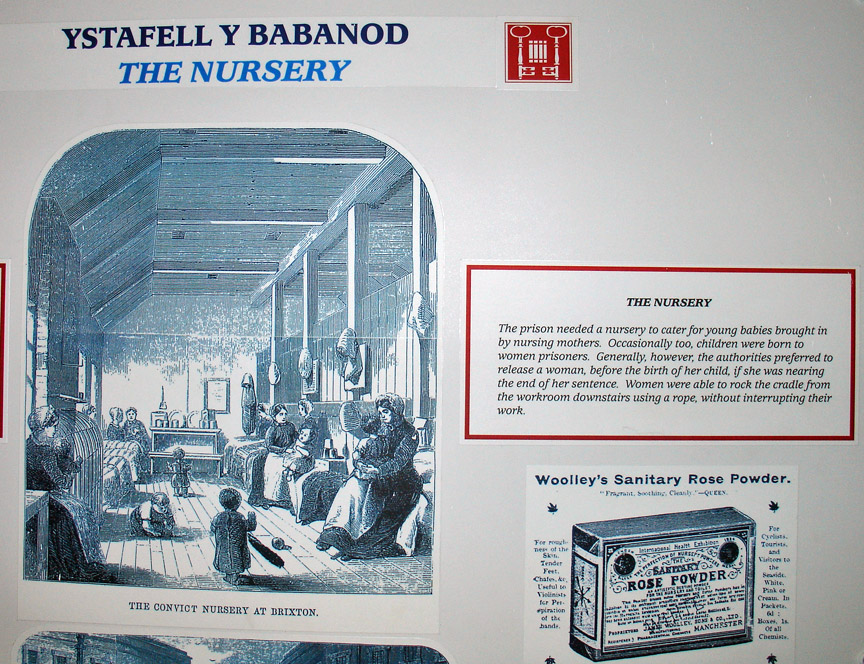
Nursery

Here you can see the slit made in the floor through which the ropes attached to
the babies’ cradles hung down into the women’s workroom below.
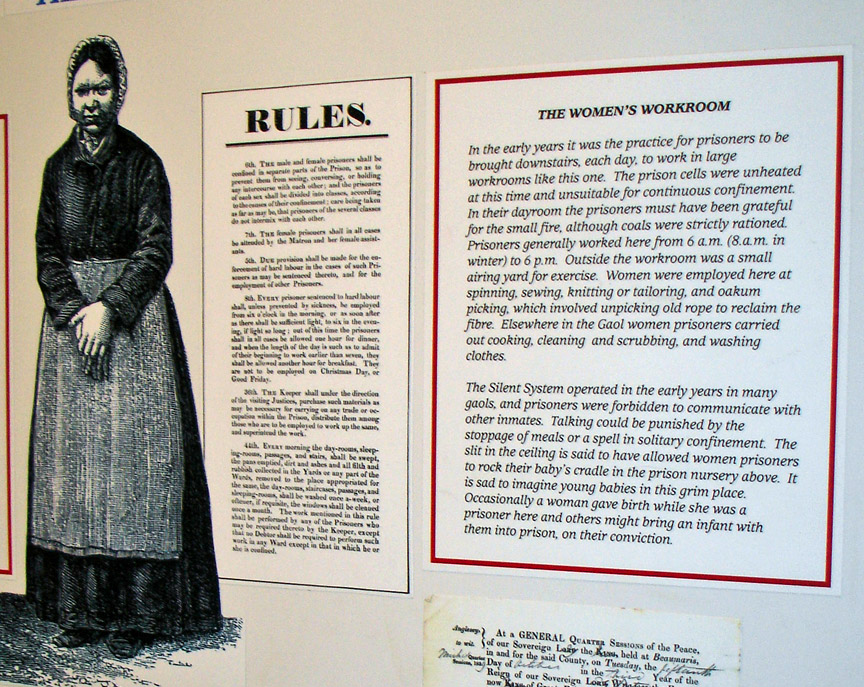
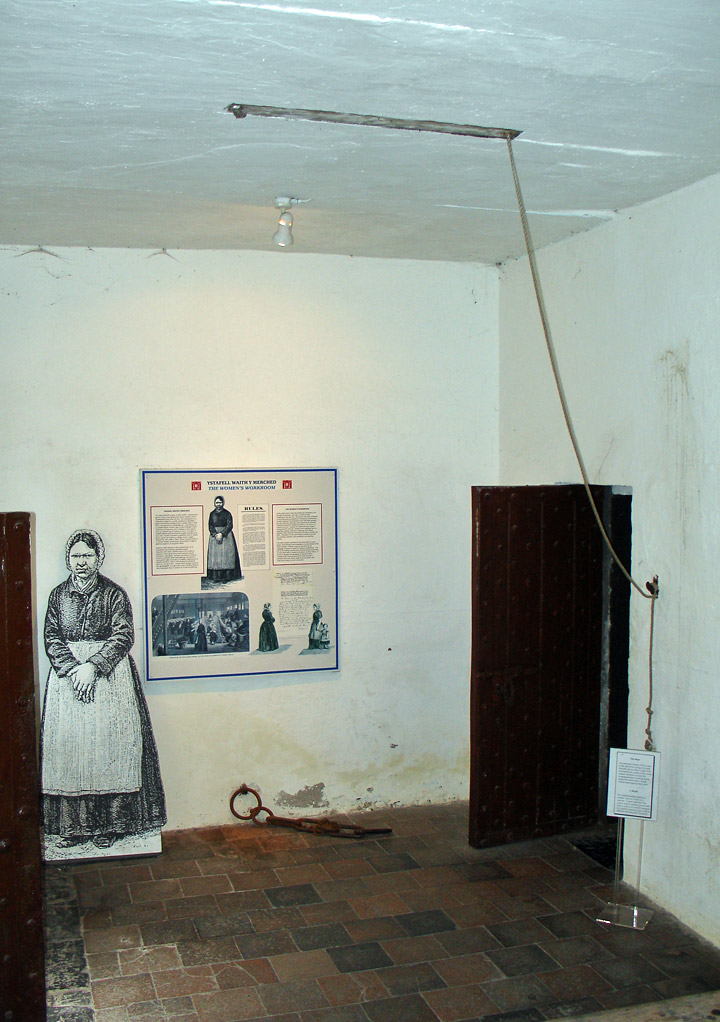
Women’s workroom

washroom
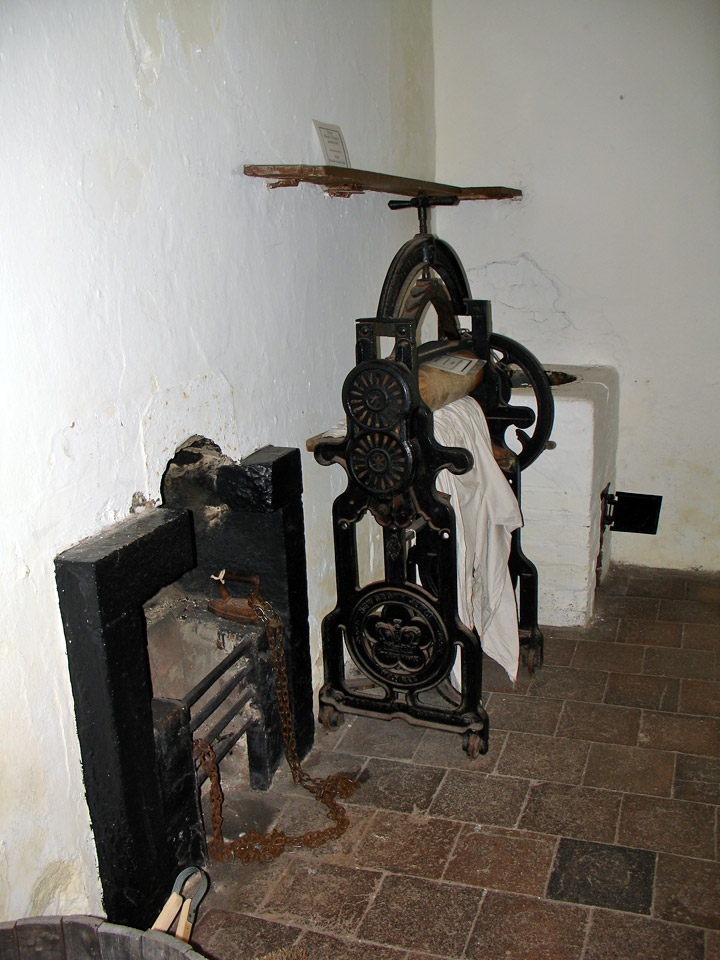
ironing machine
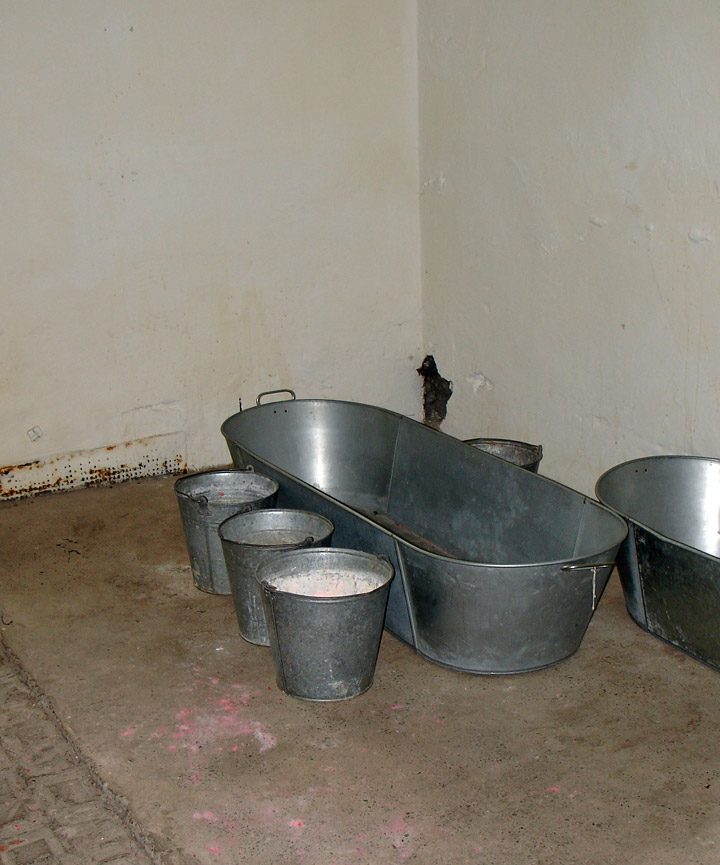
Apart from washing and laundering, women were also employed mending clothes.
knitting or tailoring, a notable feature of this day room is the slit in the
ceiling. it is said that this was to allow a rope to be attached to cradles in
the room above, so that the women employed below could rock their babies’
cradles without interrupting their work, stone steps in the corner of the room
lead to the upper floor where the nursery can be seen.
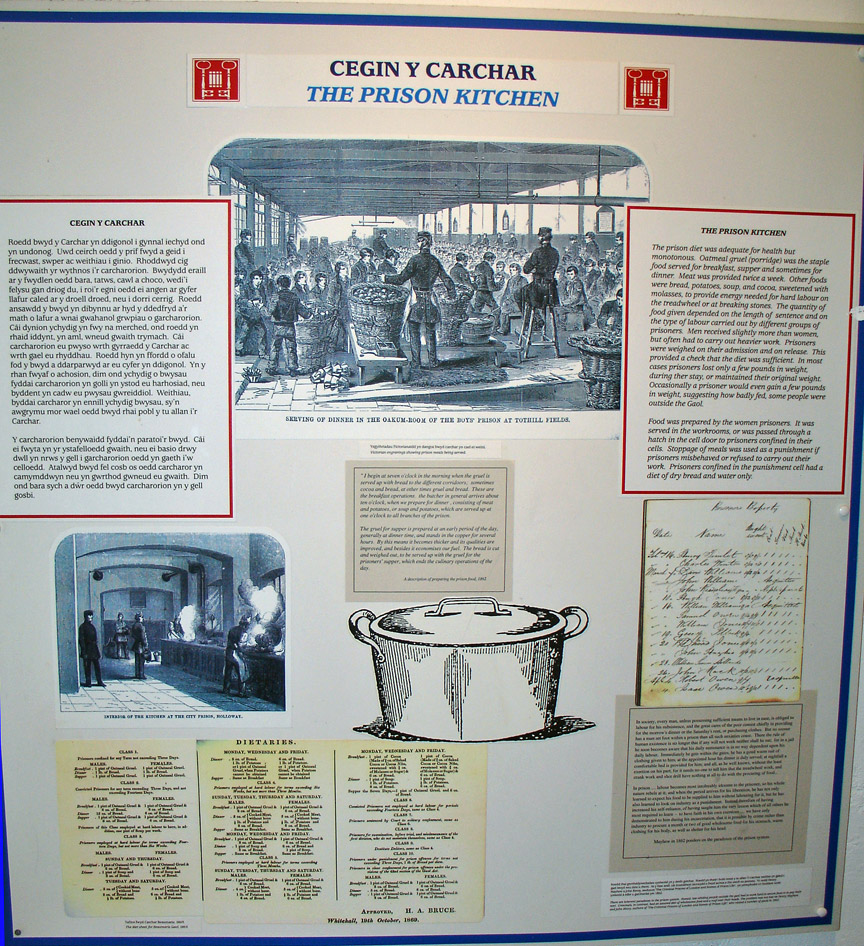

Kitchen
On the walls are displayed details of meals served in the goal. Prison food
varied according to the class of prisoners, more varied and substantial food
being given to 1ongterm prisoners to maintain their health. Food was usually
adequate but not very appetizing.
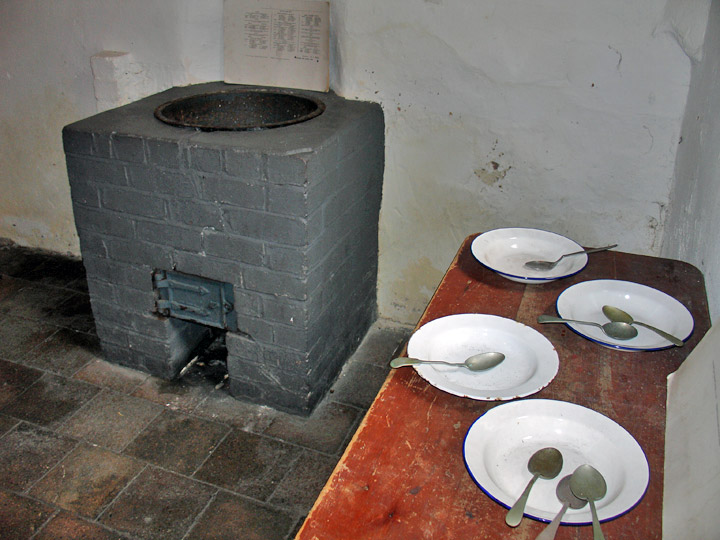
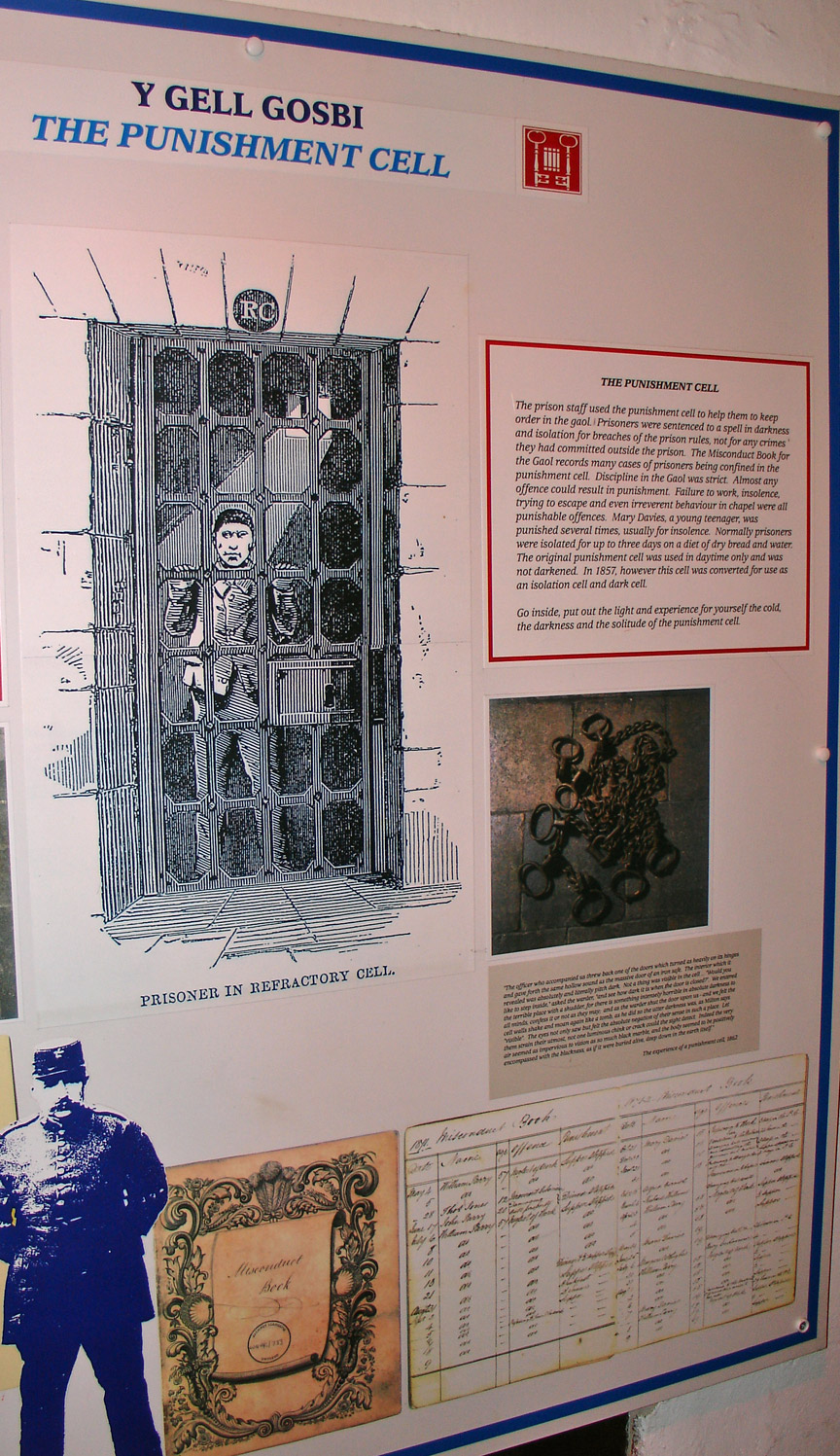
Punishment cell
This cell is completely sound proof and pitch dark. there being no window. It is
entered through three massive doors. Prisoners were sentenced to periods ranging
from one hour to three days in this cell for such offences as being insolent to
the prison staff, irreverent behavior in the chapel, refusing to work, speaking
to other prisoners whilst in the exercise yard, whistling in the cells or in one
case emptying the night pail through the cell window. A less severe punishment
was stoppage of diet, and, very rarely, the use of irons.
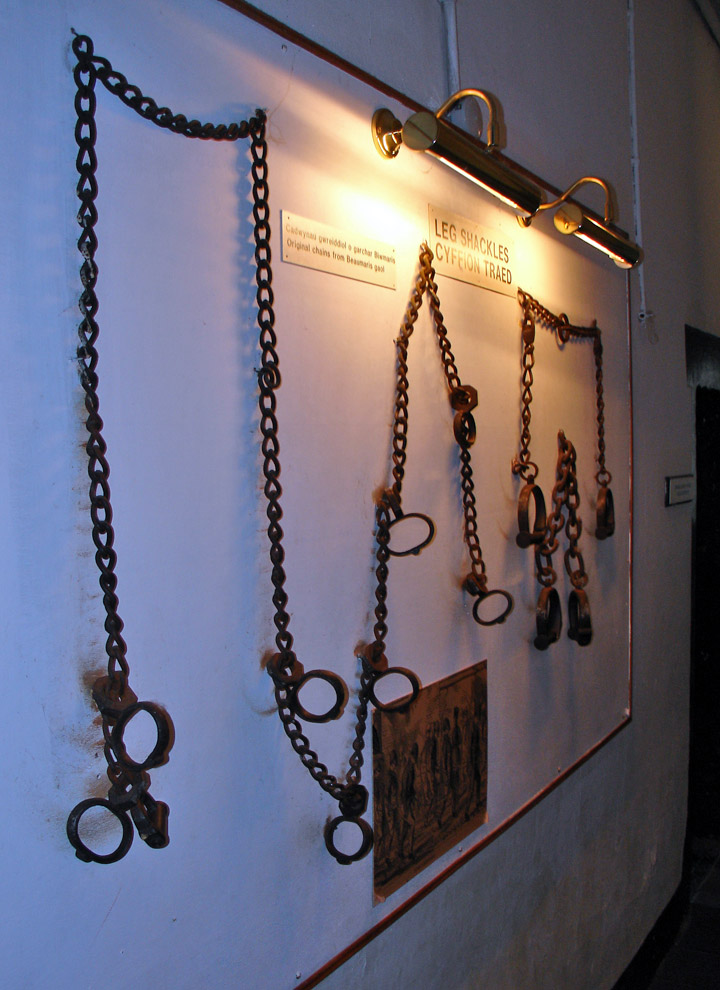
irons (leg shackles)
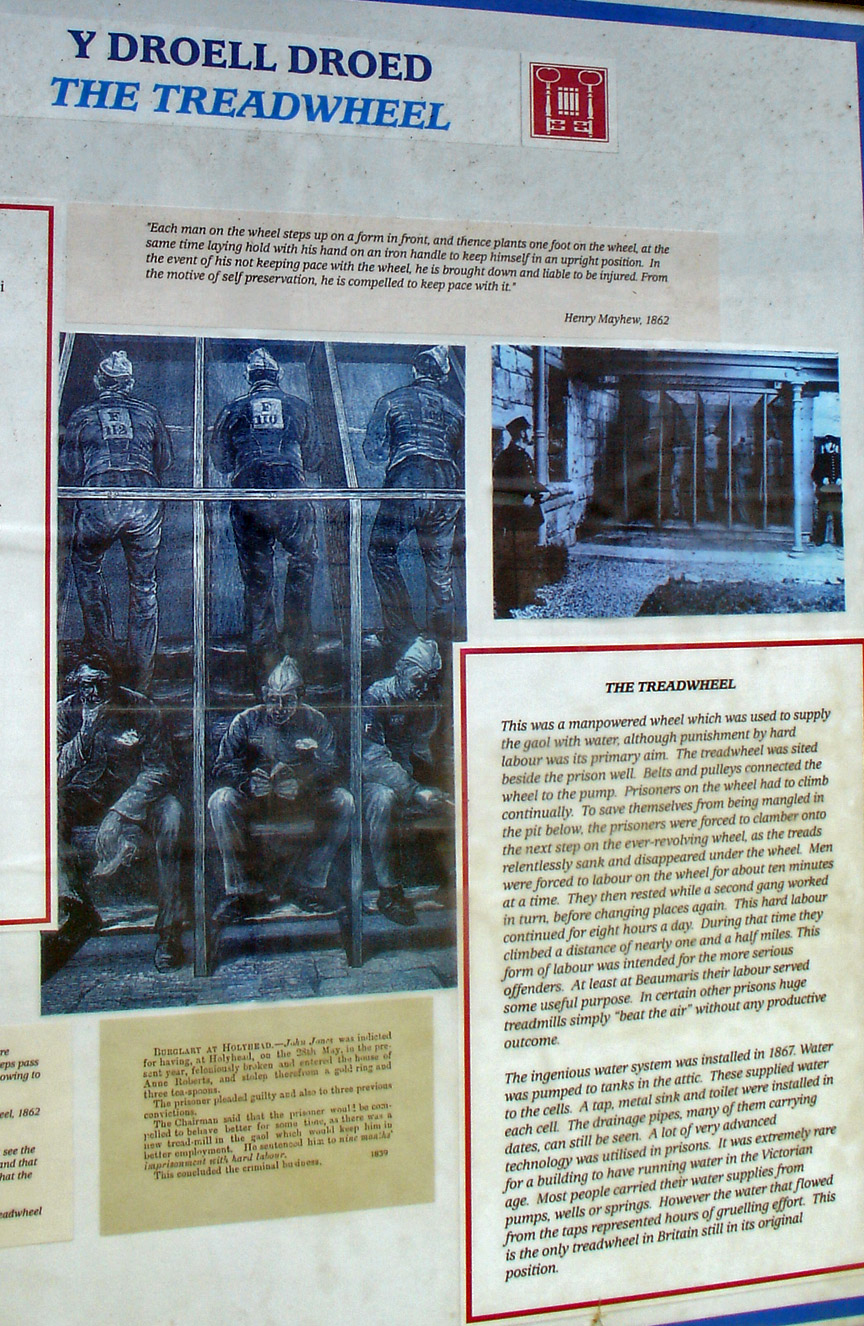

The tread mill
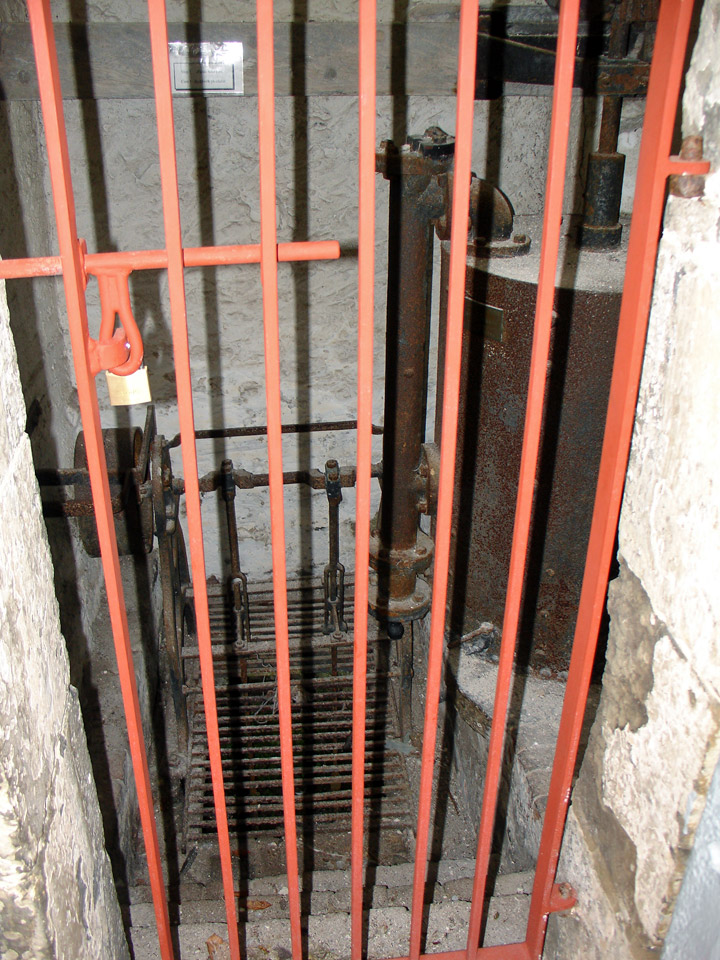
mechanism used to operate the treadmill

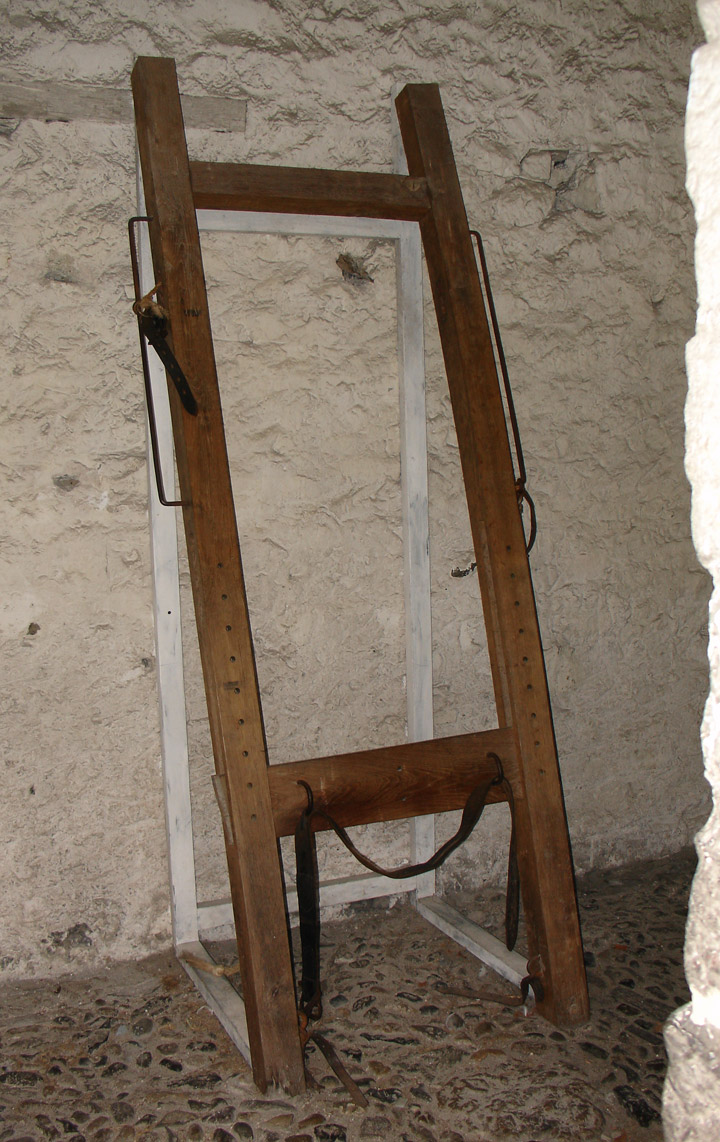
whipping frame
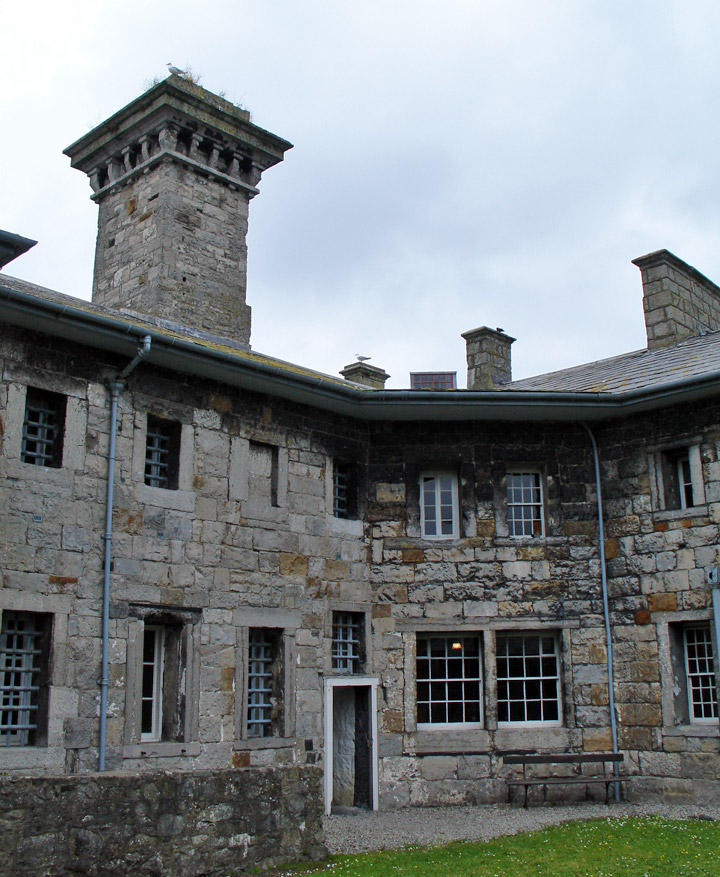
prison as seen from the courtyard
The condemned cell is twice the size of the ordinary criminal cells, and unlike them has a fireplace. On the morning of execution the condemned man had to walk along the corridor to the door in the wall. A wooden ramp was built across to the outer wall and above the Street was the platform with the gibbet in full view of the watching crowds. The mental hooks to which the platform and ramp were attached can still be seen. Only two executions took place in this goal.
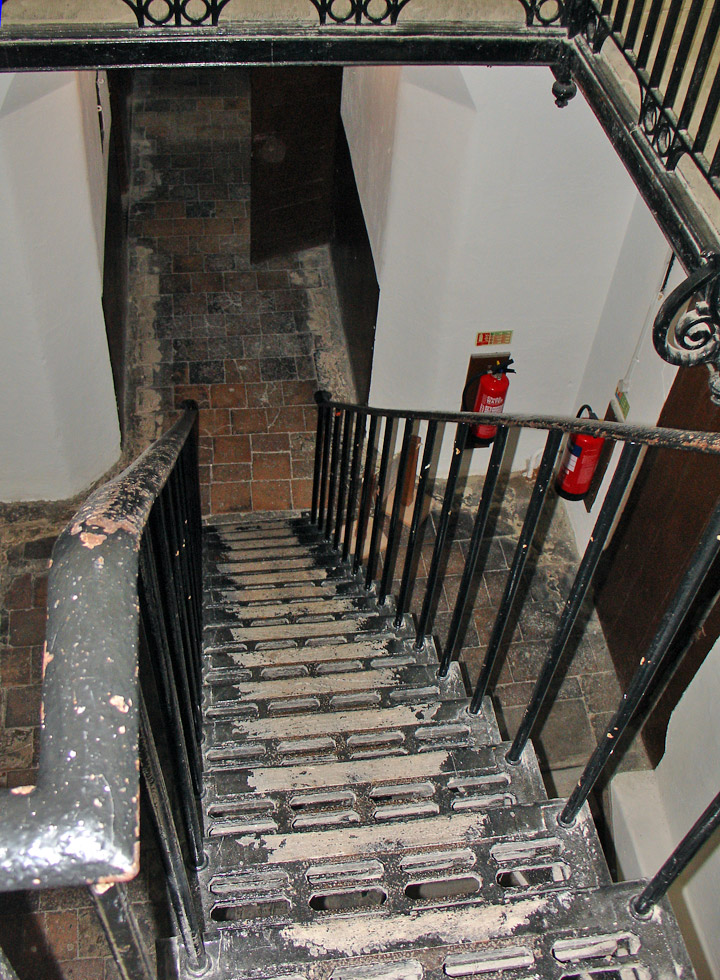
stairway
At the appointed hour. the condemned man was led from the condemned cell on a final walk to the scaffold. The Chaplin followed reading the funeral service: condemned prisoners could behave in very different ways. William Griffith, in a state of terror, fought and struggled and had to he dragged to the scaffold. Richard Rowlands in contrast behaved with bravery. He walked out calmly and “unassisted” to meet his fate. although proclaiming his innocence to the end.
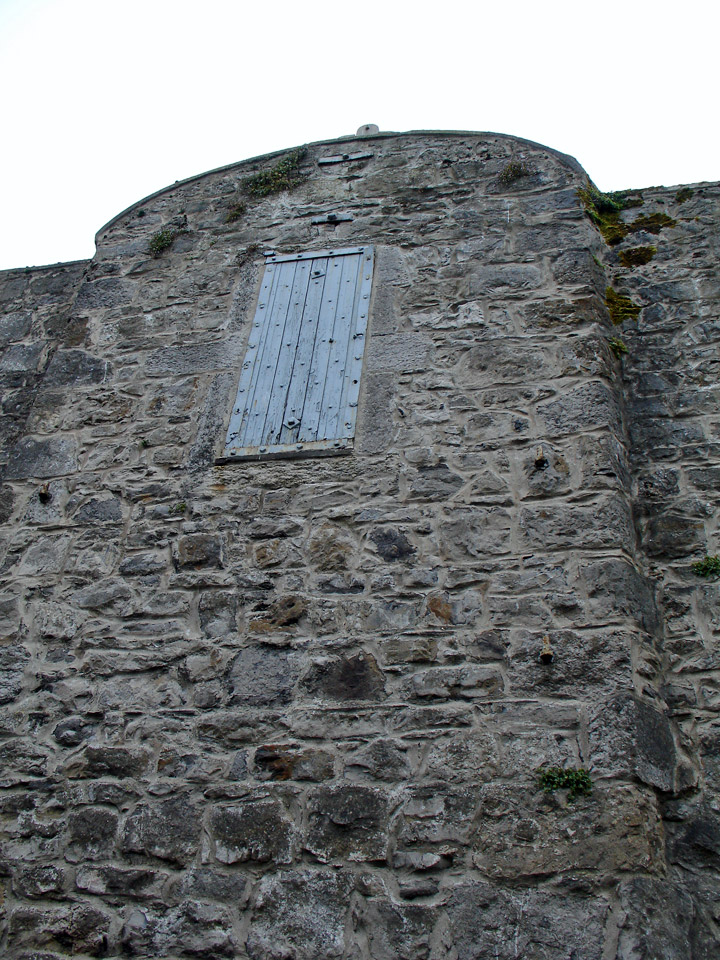
place for hangings
Huge crowds flocked into the town to see the executions, in the Street people
jostled each other for the best view and nearby households even rented out
positions in their top windows to allow spectators a good vantage point. They
also changed six pence for standing room in their gardens. Some bought broadsheets and souvenirs.
Return to Wales Elderhostel page